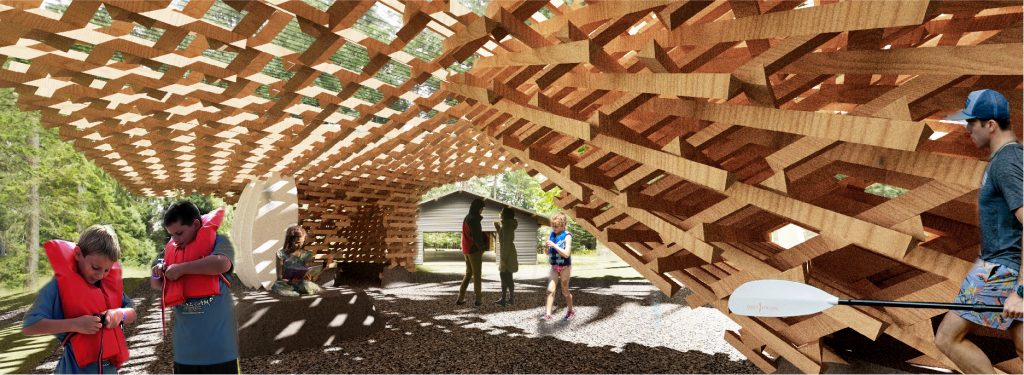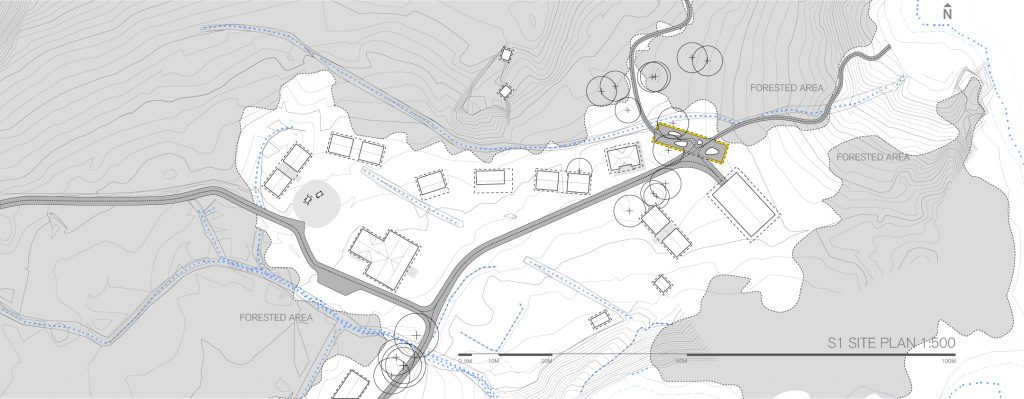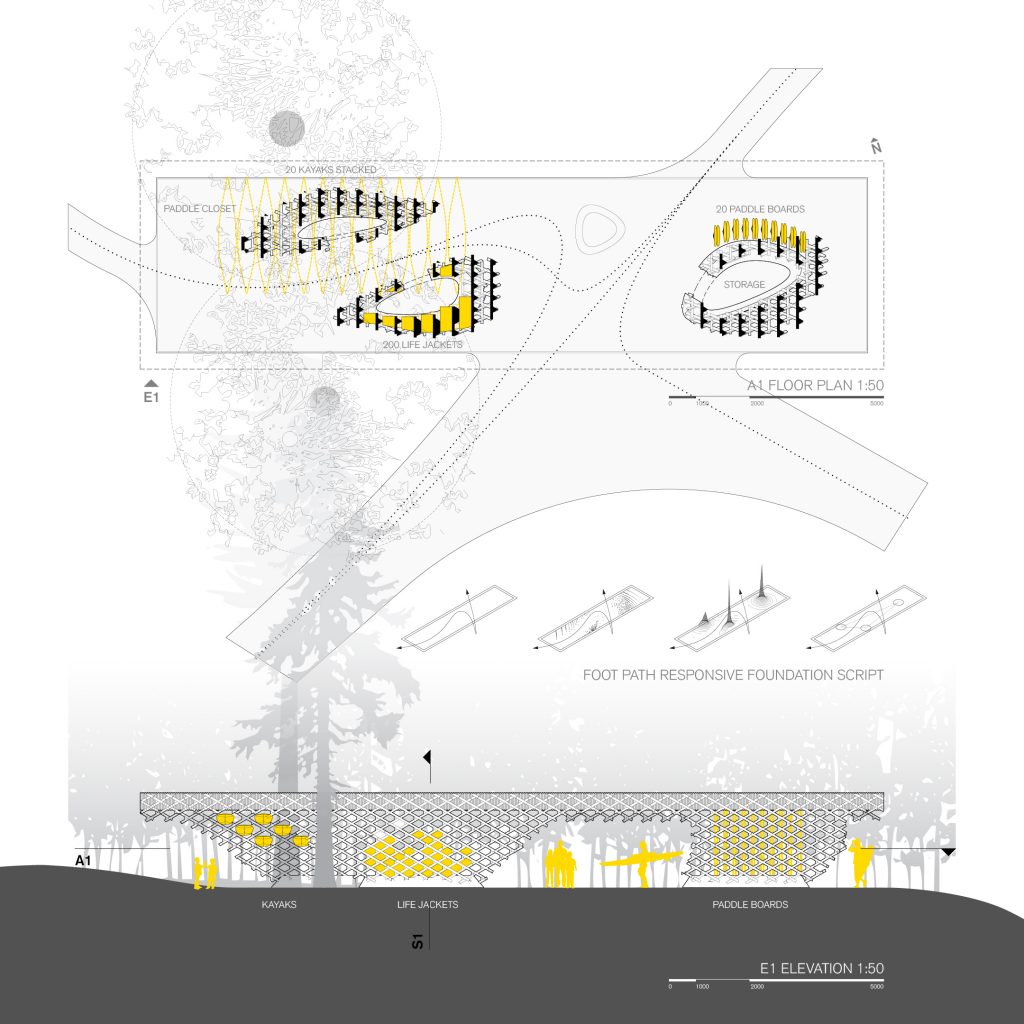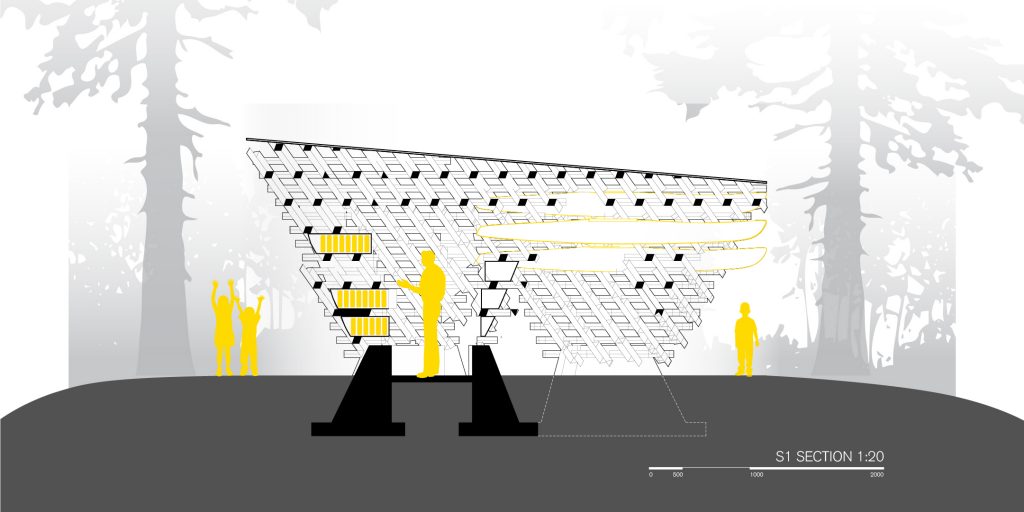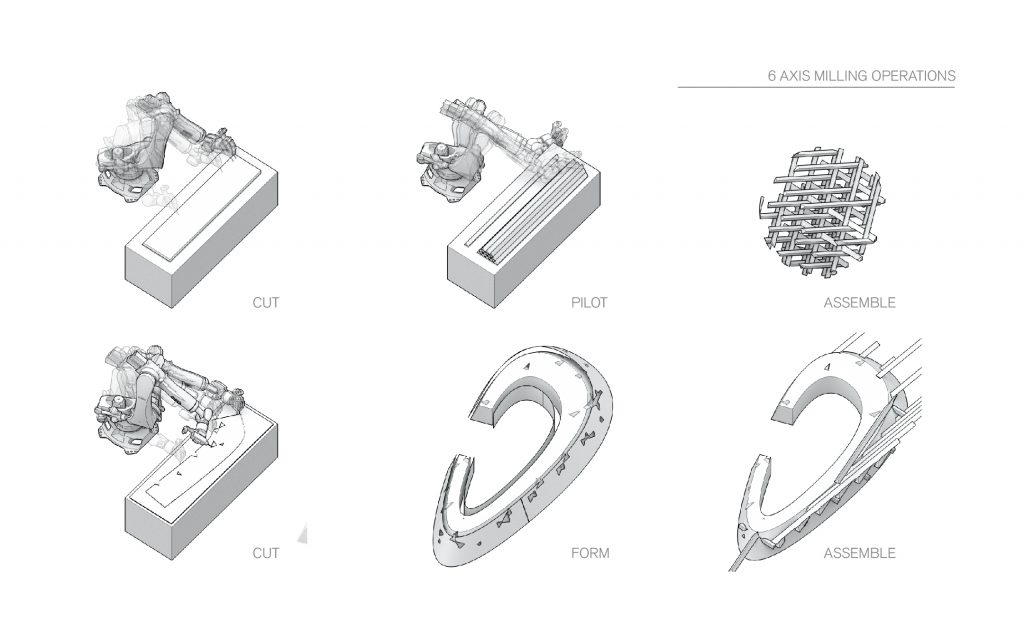by Alex Preiss
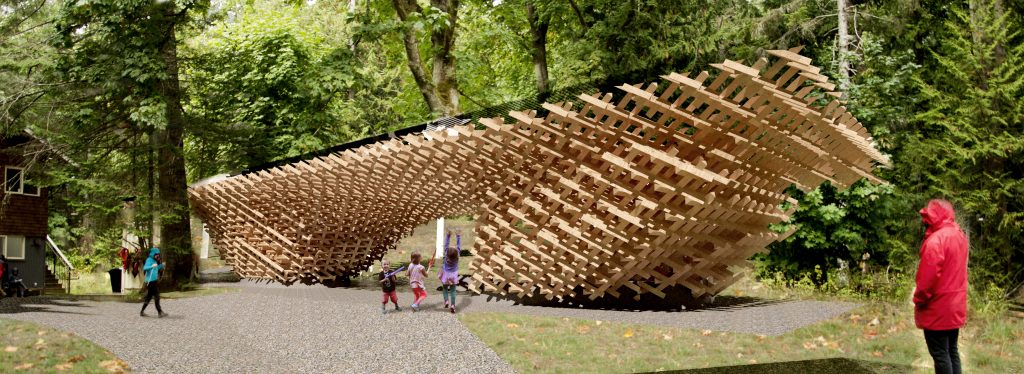
Lattice Pavilion is a water sports equipment storage structure that aims to respond to Camp Fircom’s unique position between forest, sea, and sky. This project is located on Gambier Island which observes 17 000 acres of second growth forest, off grid cabins, and Camp Fircom – a summer camp for outdoor education. The Camp provides opportunities for visitors to experience the dense tactility of a coastal forest, access to the ocean, and unobstructed mountain views from Howe Sound. The environment on Gambier is a constant flux of weather, and seasonal vegetation. Perhaps one of the greatest spectacles it has to offer is the ephemeral nature of the landscape. This project therefore aims to use the incredibly precise (the digital) to capture an essence of the ephemeral (the environment).
The form of the pavilion is derived using algorithm analysis of traffic patterns through the numerous footpaths on the site. A scripted process defines the probability of areas best suited for both foundation and enclosure between existing paths. This provides moments of pause without interrupting movement on site. Foundations, enclosed storage areas, and wood structure meet the ground in these areas. The pavilion spans lightly overhead using a wooden spaceframe or “Quadralattice” based on three regular-triangle profiled members that tessellate so that each shares a coplanar face with its two neighbors. This creates a cross laminated structure with thee directions of grain.
The storage of sports equipment is within the voids of the wood structure. Kayaks and paddle boards are stored parallel to one axis of the structure and can fill long cavities. More sensitive items are stored within honeycomb cabinets that infill between intersections of the lattice.
The remote nature of the site provides challenges to building in situ. Materials must be barged to the island and must require minimal on site modifications. 6 Axis milling provides an incredible alternative to traditional manufacturing as it allows for the pavilion to be pre-fab and assembled with simple hand tools. A robot may be used to precisely mill each member as well as provide pilot holes for a dowel connection. On site assembly is achieved by simply fitting dowels in existing holes. Further this milling technique can be used for the manufacture of formwork for foundations. A Robot can cut formwork for curved foundations out of plywood. It is capable of cutting angled apertures for the insertion of non-orthogonal structural members. All items are flat-packed and shipped as one streamlining transport and assembly.
